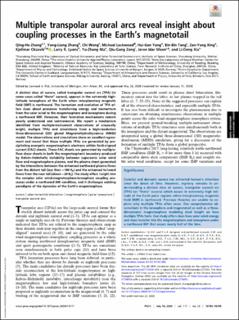| dc.contributor.author | Zhang, Qing-He | |
| dc.contributor.author | Zhang, Yong-Liang | |
| dc.contributor.author | Wang, Chi | |
| dc.contributor.author | Lockwood, Michael | |
| dc.contributor.author | Yang, Hui-Gen | |
| dc.contributor.author | Tang, Bin-Bin | |
| dc.contributor.author | Xing, Zan-Yang | |
| dc.contributor.author | Oksavik, Kjellmar | |
| dc.contributor.author | Lyons, Larry R. | |
| dc.contributor.author | Ma, Yu-Zhang | |
| dc.contributor.author | Zong, Qiu-Gang | |
| dc.contributor.author | Moen, Jøran Idar | |
| dc.contributor.author | Xia, Li-Dong | |
| dc.date.accessioned | 2021-05-18T13:50:16Z | |
| dc.date.available | 2021-05-18T13:50:16Z | |
| dc.date.created | 2020-10-06T13:54:18Z | |
| dc.date.issued | 2020 | |
| dc.Published | Proceedings of the National Academy of Sciences of the United States of America. 2020, 117 (28), 16193-16198. | |
| dc.identifier.issn | 0027-8424 | |
| dc.identifier.uri | https://hdl.handle.net/11250/2755523 | |
| dc.description.abstract | A distinct class of aurora, called transpolar auroral arc (TPA) (in some cases called “theta” aurora), appears in the extremely high-latitude ionosphere of the Earth when interplanetary magnetic field (IMF) is northward. The formation and evolution of TPA offers clues about processes transferring energy and momentum from the solar wind to the magnetosphere and ionosphere during a northward IMF. However, their formation mechanisms remain poorly understood and controversial. We report a mechanism identified from multiple-instrument observations of unusually bright, multiple TPAs and simulations from a high-resolution three-dimensional (3D) global MagnetoHydroDynamics (MHD) model. The observations and simulations show an excellent agreement and reveal that these multiple TPAs are generated by precipitating energetic magnetospheric electrons within field-aligned current (FAC) sheets. These FAC sheets are generated by multiple-flow shear sheets in both the magnetospheric boundary produced by Kelvin–Helmholtz instability between supersonic solar wind flow and magnetosphere plasma, and the plasma sheet generated by the interactions between the enhanced earthward plasma flows from the distant tail (less than −100 RE) and the enhanced tailward flows from the near tail (about −20 RE). The study offers insight into the complex solar wind-magnetosphere-ionosphere coupling processes under a northward IMF condition, and it challenges existing paradigms of the dynamics of the Earth’s magnetosphere. | en_US |
| dc.language.iso | eng | en_US |
| dc.publisher | National Academy of Sciences | en_US |
| dc.rights | Attribution-NonCommercial-NoDerivatives 4.0 Internasjonal | * |
| dc.rights.uri | http://creativecommons.org/licenses/by-nc-nd/4.0/deed.no | * |
| dc.title | Multiple transpolar auroral arcs reveal insight about coupling processes in the Earth’s magnetotail | en_US |
| dc.type | Journal article | en_US |
| dc.type | Peer reviewed | en_US |
| dc.description.version | publishedVersion | en_US |
| dc.rights.holder | Copyright 2020 the Author(s). | en_US |
| cristin.ispublished | true | |
| cristin.fulltext | original | |
| cristin.qualitycode | 2 | |
| dc.identifier.doi | 10.1073/pnas.2000614117 | |
| dc.identifier.cristin | 1837620 | |
| dc.source.journal | Proceedings of the National Academy of Sciences of the United States of America | en_US |
| dc.source.40 | 117 | |
| dc.source.14 | 28 | |
| dc.source.pagenumber | 16193-16198 | en_US |
| dc.relation.project | Norges forskningsråd: 223252 | en_US |
| dc.identifier.citation | Proceedings of the National Academy of Sciences of the United States of America. 117 (28), 16193-16198 | en_US |
| dc.source.volume | 117 | en_US |
| dc.source.issue | 28 | en_US |

